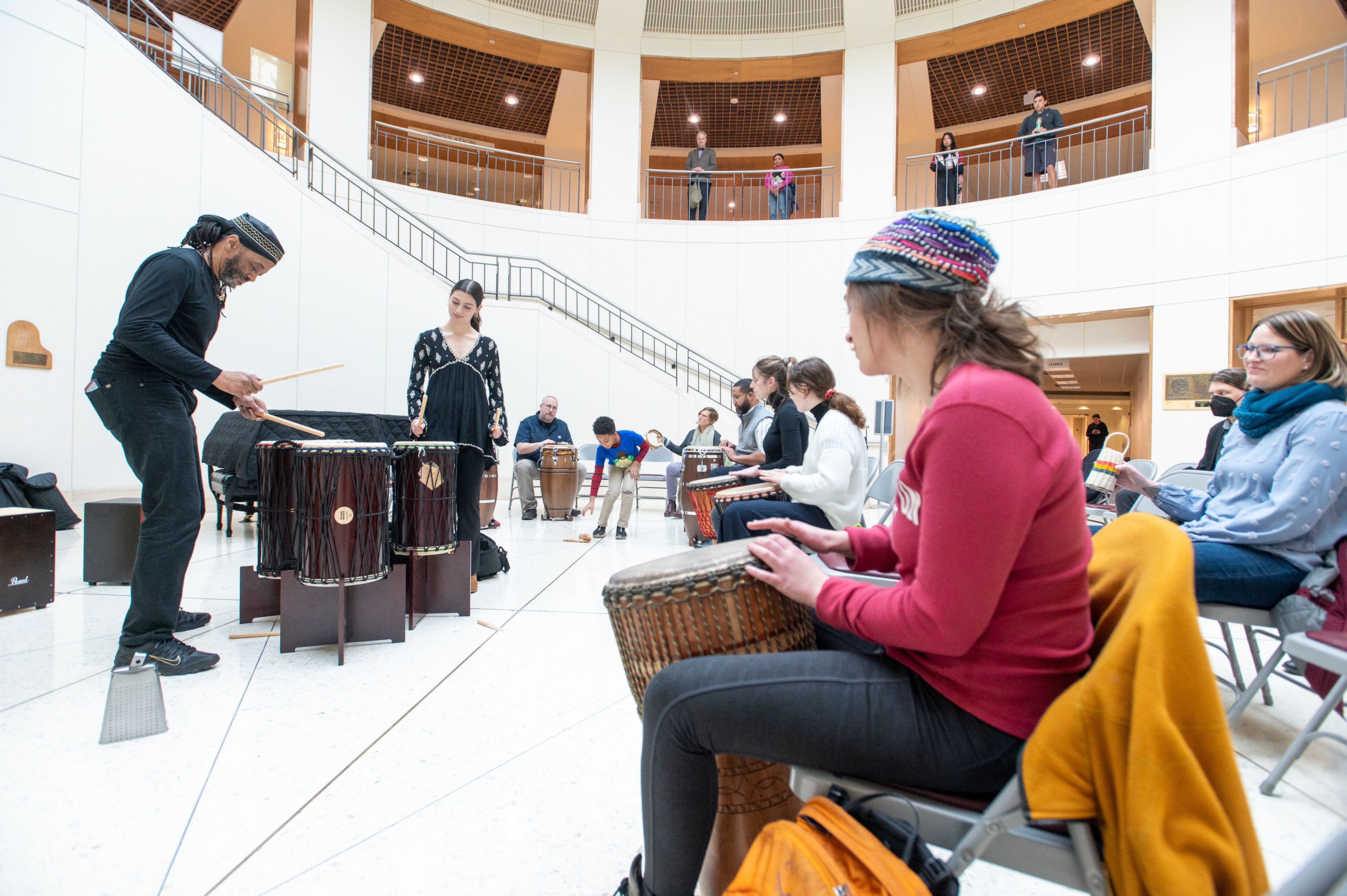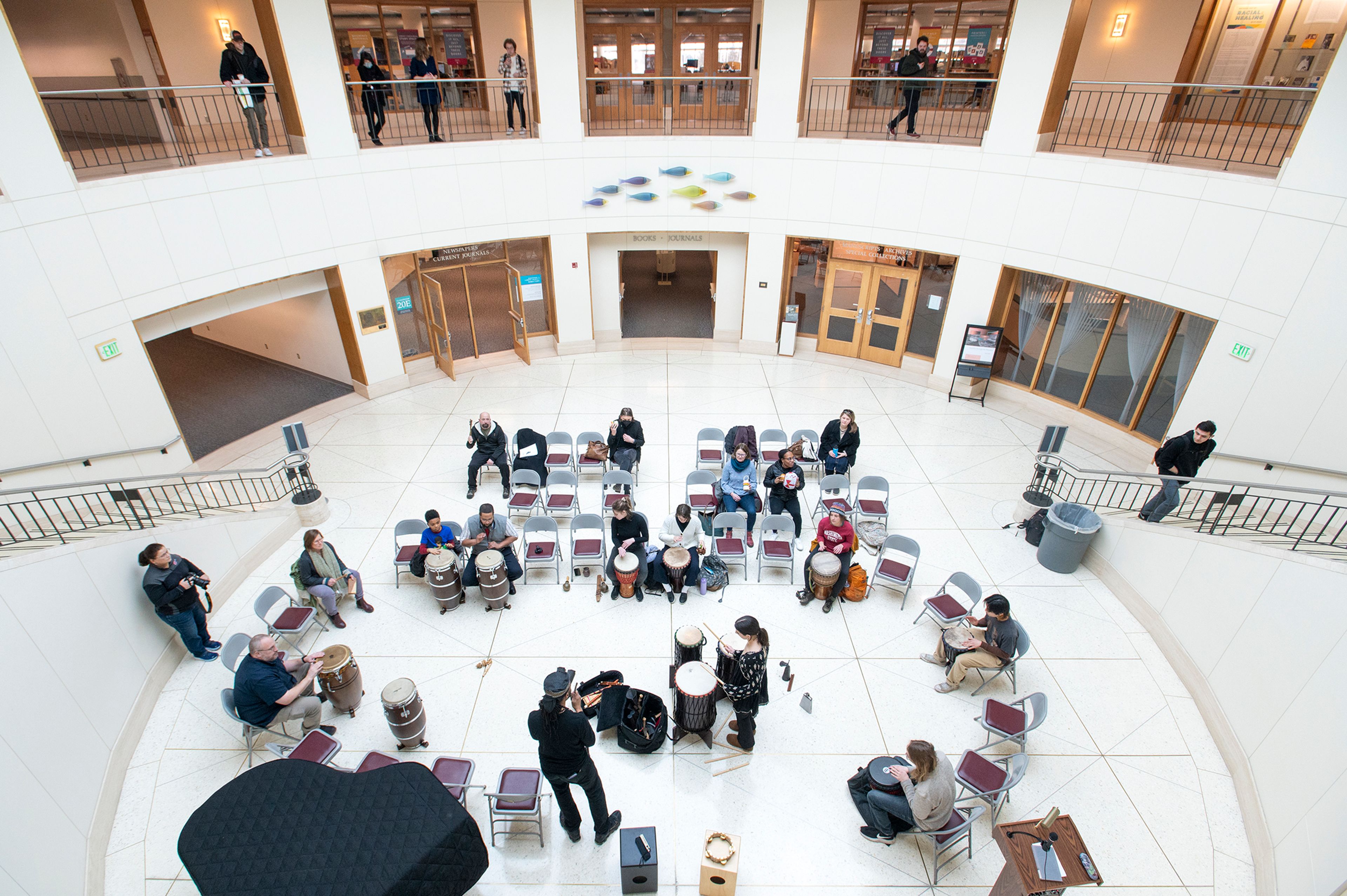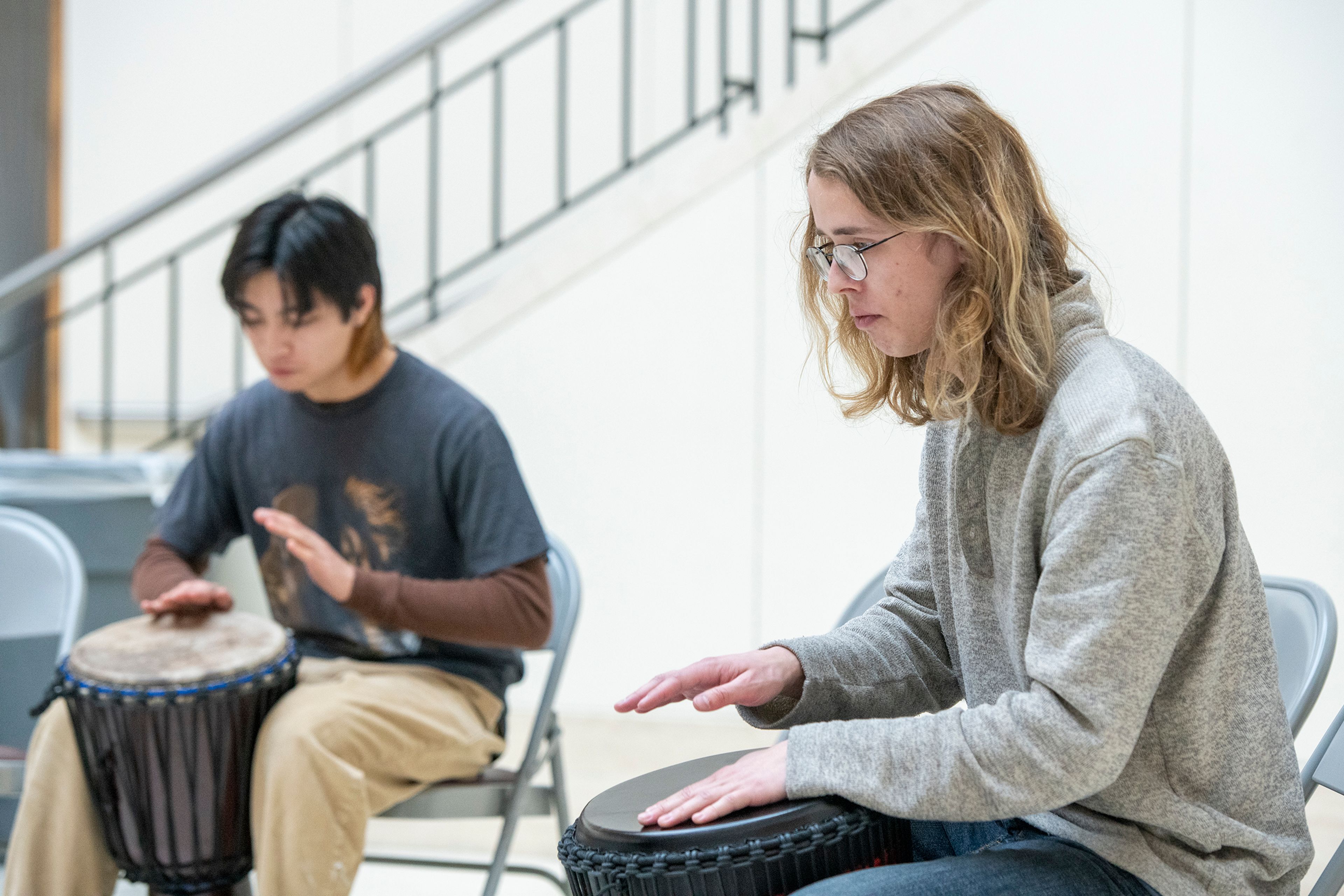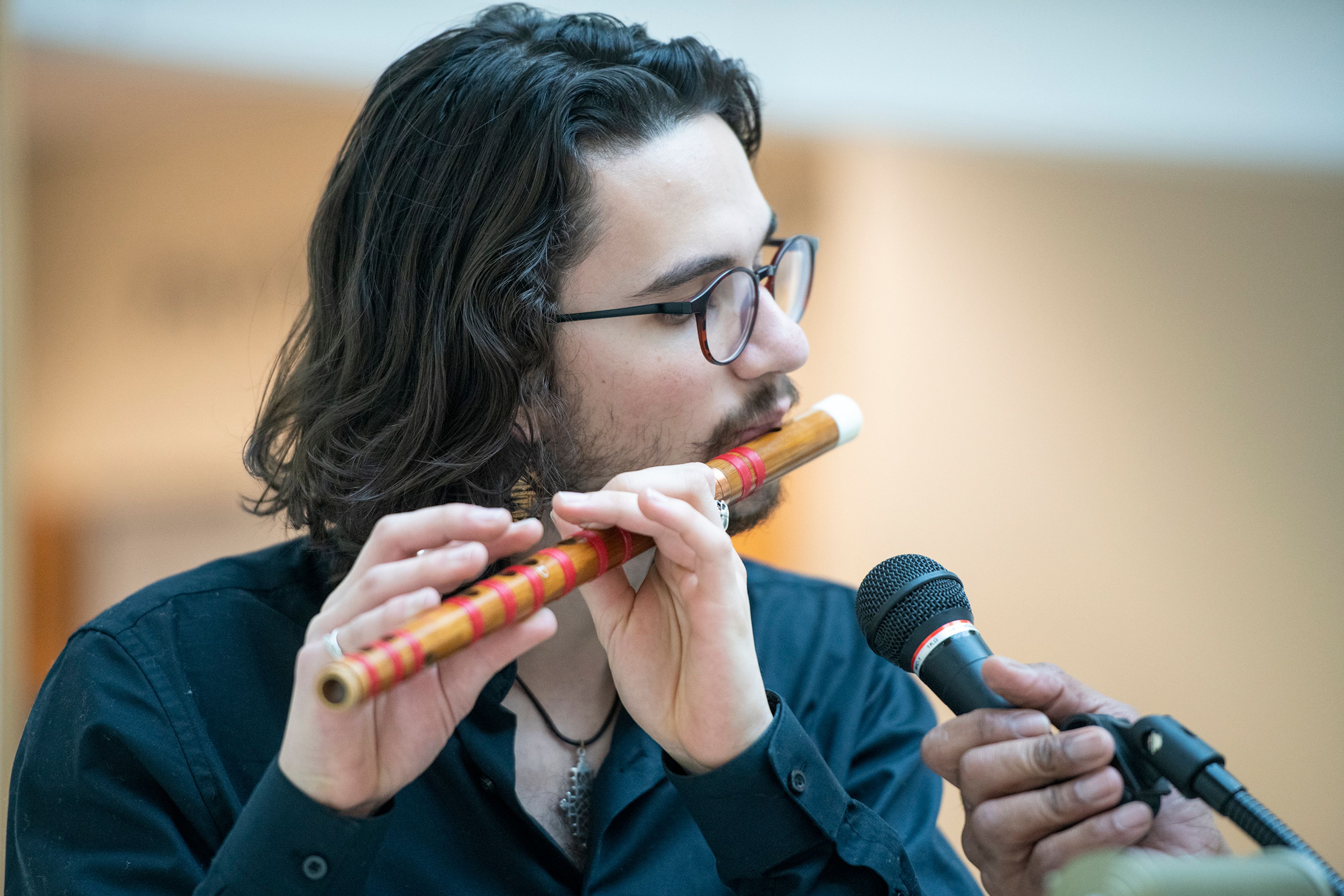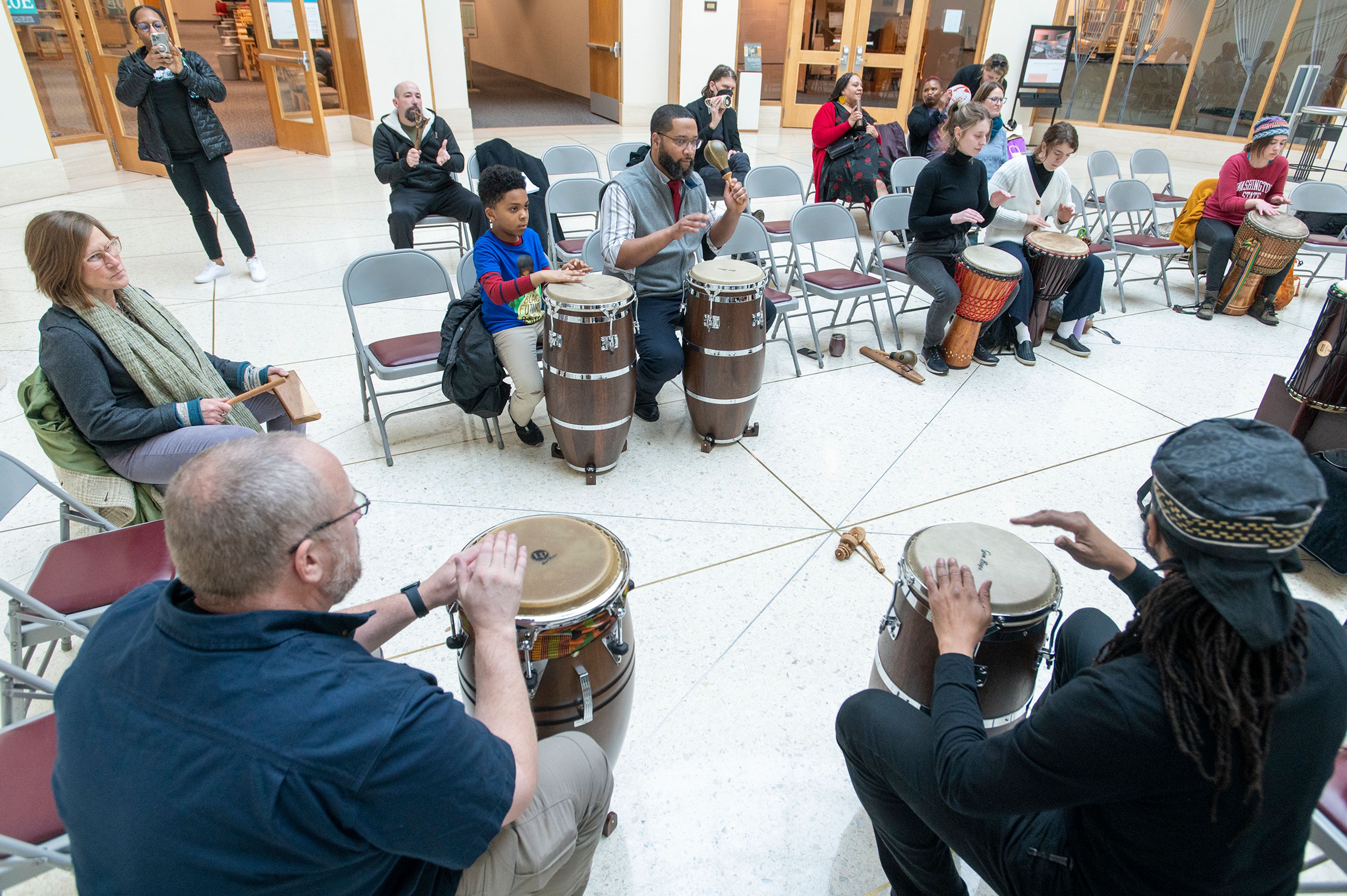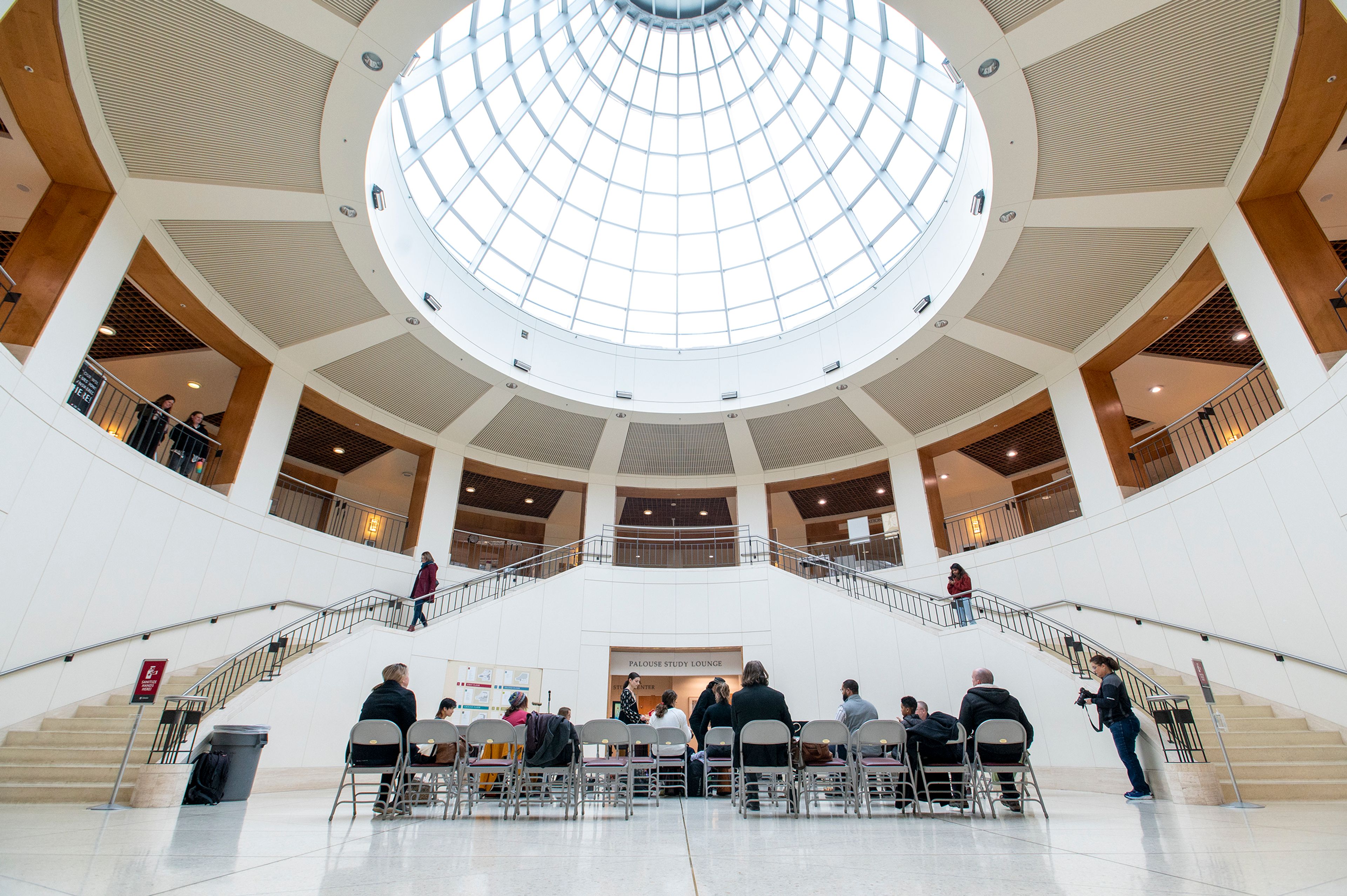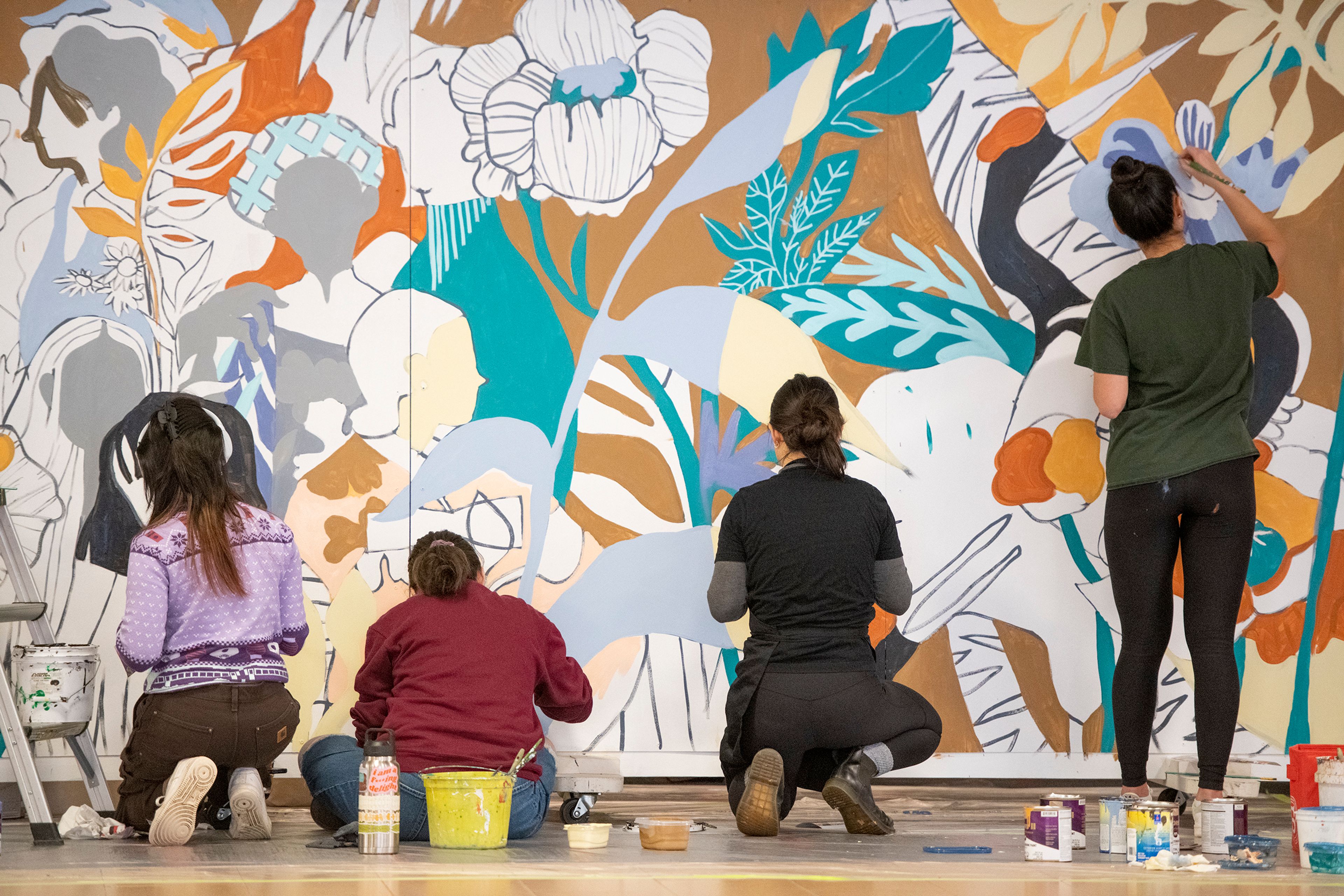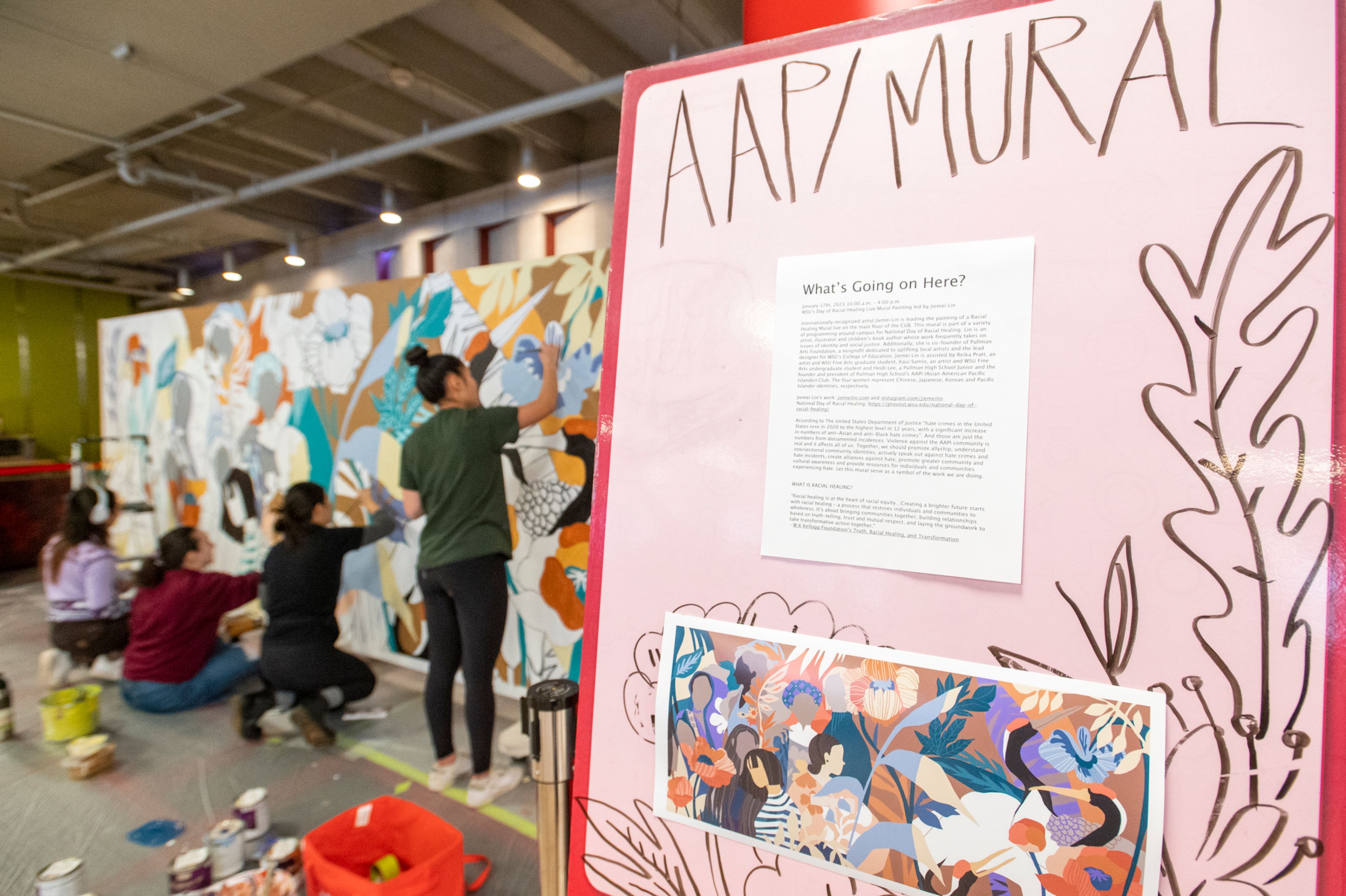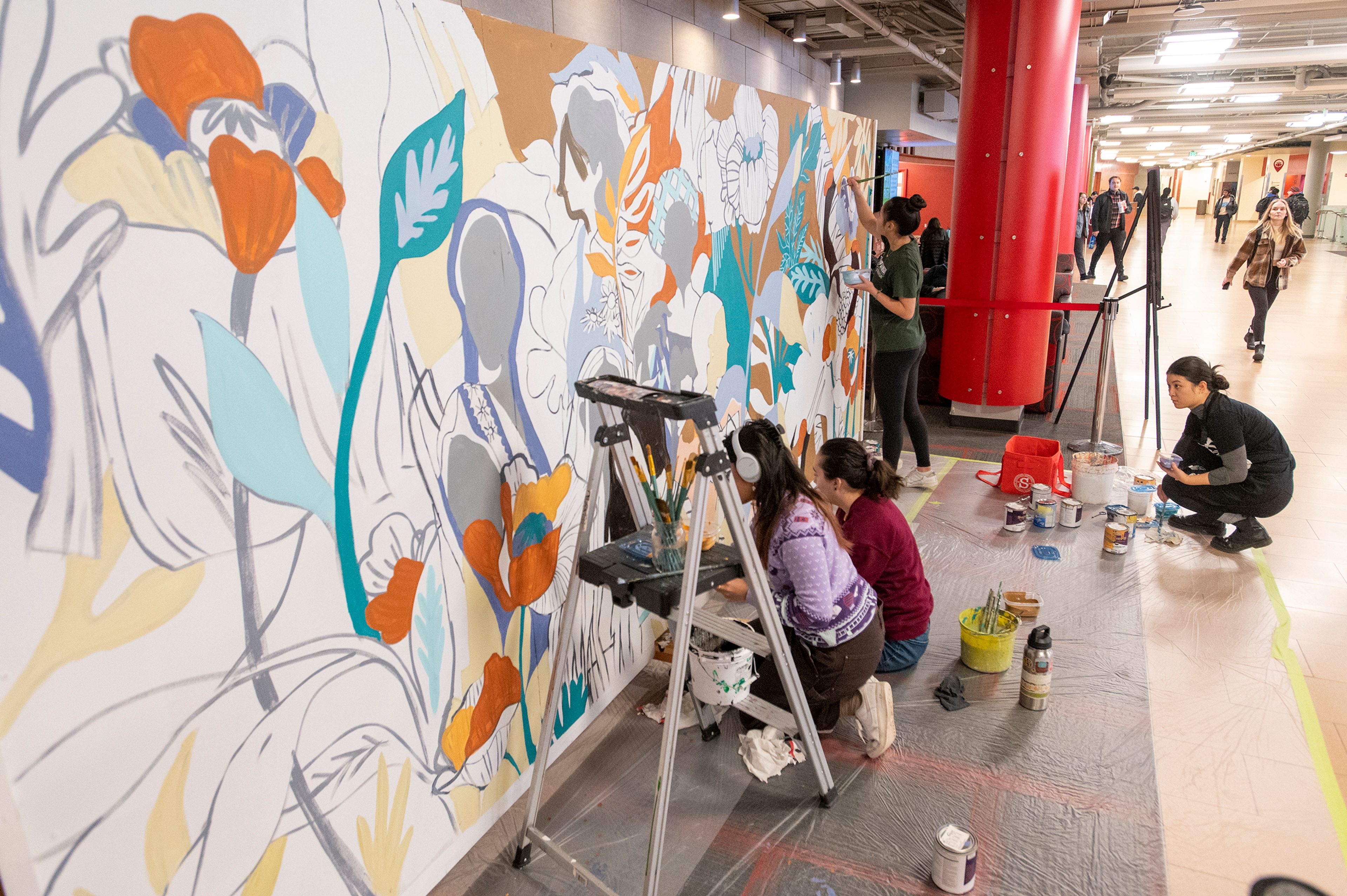WSU event focuses on racial healing
Students encouraged to work on creating a welcoming community
PULLMAN — Students and the public alike were asked to focus on healing from the past and working to create a welcoming community for the future at the National Day of Racial Healing at Washington State University.
The Tuesday event kicked off with an opening ceremony held via Zoom. Vice Provost Zoe Higheagle Strong gave the land acknowledgement and said she was glad for the day, adding that she hopes students would get involved in the day’s activities and take the National Day or Racial Healing pledge on the provost’s website at bit.ly/3QJT7Sx.
During the event, students had the chance to attend a drum circle at the Terrell Library Atrium and an open-mic poetry slam. They could also help paint the Healing Wall at the Compton Union Building. Jiemei Lin, the artist behind the Healing Wall, is a children’s book author and illustrator whose work centers around issues of identity and social justice.
There also was a panel on “Truth, Racial Healing, and Transformation across the Washington State University System,” moderated by Associate Vice Provost for Equity and Inclusive Excellence Lisa Guerrero. Attendees were also able to watch a performance by Crimson Ties, a world music ensemble created by Darryl Singleton.
The event marked the first National Day of Racial Healing at WSU and organizers hope it will help the university community develop ways of thinking which support culturally and racially nonharming practices. While the planned events only lasted one day, organizers said they hope students and other attendees will use the knowledge they gained as they continue throughout the year.
The National Day of Racial Healing was launched Jan. 17, 2017, and was organized by the W.K. Kellogg Foundation. The day is held the Tuesday after Martin Luther King Jr. Day. The goal of the event is to create a clear understanding that healing is at the core of equity.
“Healing looks different for each person,” said Julien Ankney, from the Department of English at the WSU Vancouver campus.
Other guests at the event included Robert Franklin, from the department of history at the Tri-Cites campus; Lois James, an associate professor in the College of Nursing; Connie Kim Yen Nguyen-Truong, a tenured associate professor; and Shayla Reid, a third year medical student.
Those who participated in the day’s activities were encouraged to not only learn about past and present injustices, but identify ways they can work toward solving racial biases in their own life. James said that for nonminority students, it is often uncomfortable to feel blamed for the actions of their ancestors, but that taking accountability for these actions was still necessary.
“You don’t have to feel shame or feel guilt (for your ancestor’s actions), but you should feel accountable,” Guerrero said.
To close the event, the chancellors of all WSU campuses gave their thoughts on how to create racial equality and healing. Paul Pitre, chancellor of the Everrett campus, said it was possible to see change when talking about racial healing, but that in order for there to be healing, there must be education related to race and work toward bettering communities to ensure many feel welcome.
“Healing is your decision, healing is our decision,” said Trymaine Gaither, the inclusive excellence special assistant to the provost, during closing remarks.
More information on the National Day of Racial Healing is available at healourcommunities.org/about.
Kali Nelson can be reached at knelson@dnews.com.
